No oil, no charging, no exhaust gas—just pure water as the only byproduct. Is such a car possible? The answer is yes! Toyota Mirai is proof of that. But how exactly does it work?
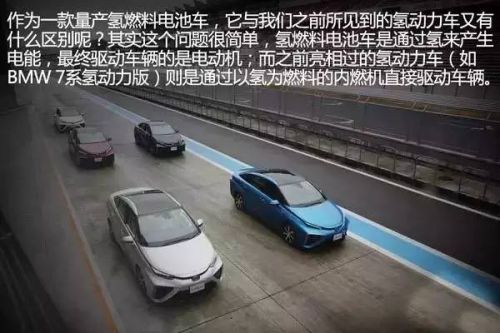
As fossil fuel resources continue to deplete, it's inevitable that traditional gasoline cars will eventually be replaced by new energy alternatives. Among these, Toyota has always stood out. While the Prius has been around for multiple generations and still runs on gasoline, its impact on the development of green vehicles cannot be ignored. However, the Mirai, Toyota’s hydrogen fuel cell vehicle, represents a glimpse into the future of transportation.
Compared to electric vehicles, which are currently popular in China, hydrogen fuel cells offer higher energy density (about seven times that of conventional batteries per unit volume) and much faster refueling times. Moreover, from an environmental perspective, hydrogen fuel cells can have a more significant impact than just reducing a car’s carbon emissions, especially considering China’s current power generation structure.
When it comes to the Mirai, it's not like the earlier hydrogen-powered cars we've seen. Unlike the BMW 7 Series hydrogen model, which directly uses hydrogen for propulsion, the Mirai generates electricity through a fuel cell stack, which then powers an electric motor. This makes it fundamentally different and more efficient.
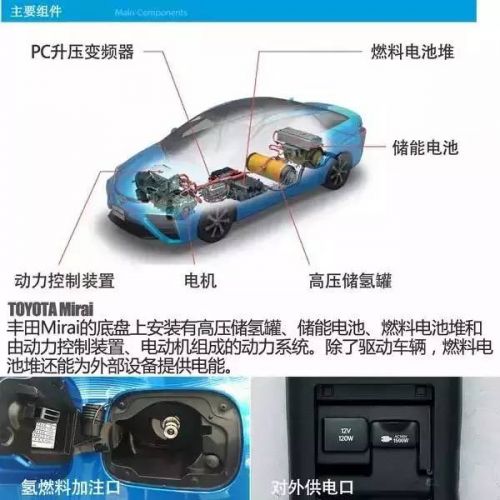
Understanding how the Mirai works is key. In simple terms, the car uses hydrogen and oxygen in a fuel cell to generate electricity, which then drives the motor. But the process is far more complex when you look at the system's components.
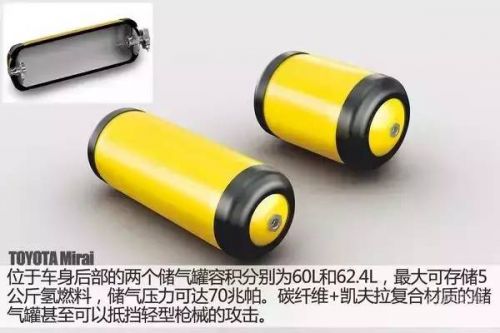
Hydrogen molecules are small enough to pass through the pores of a membrane, but during this process, electrons are separated, leaving behind positively charged hydrogen ions. These ions move toward the opposite electrode, where they combine with oxygen to form pure water—a byproduct of the reaction. This entire process is essentially a way to generate electricity.
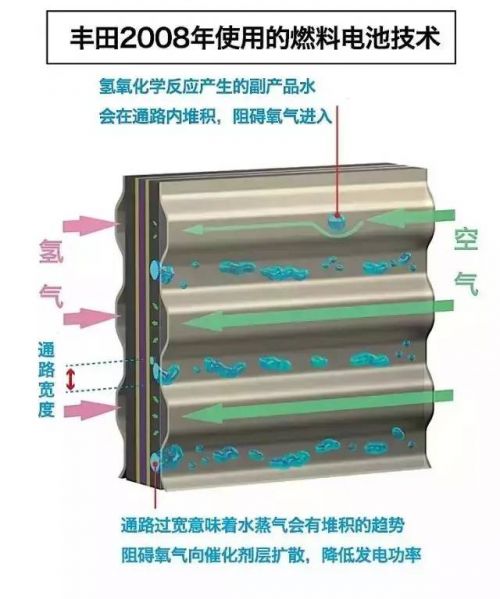
Toyota 2008 Fuel Cell
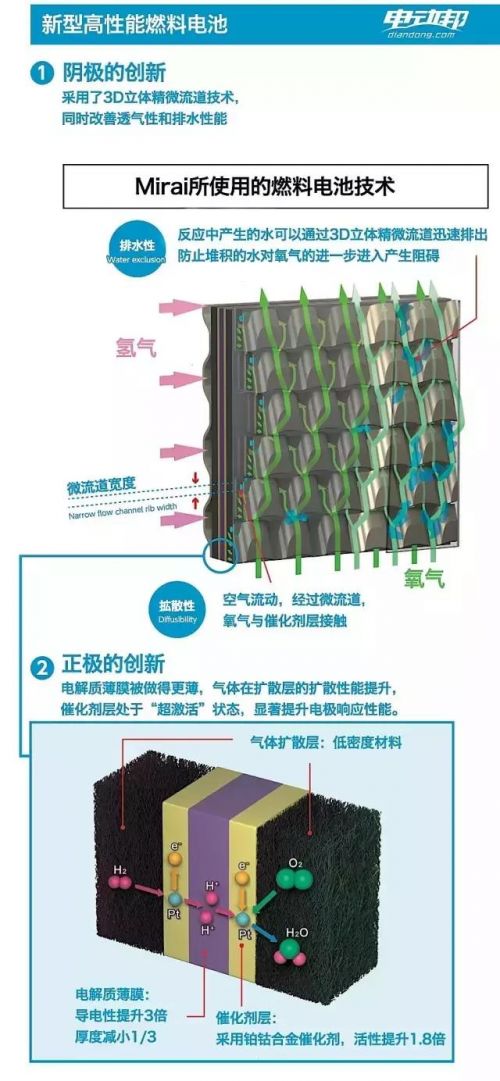
Toyota Mirai's Fuel Cell Innovation
The Mirai's fuel cell stack consists of 370 thin-film cells, giving it a total output of 114 kW. This technology has evolved over the past decade, incorporating innovations like 3D micro-channel design, which improves efficiency by better managing waste water and increasing airflow. This results in a power density of 3.1 kW/liter, a 2.2x improvement since 2008.
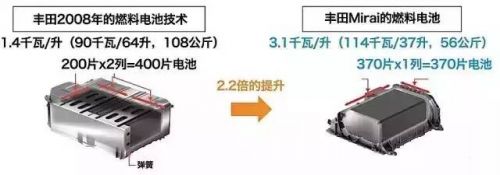
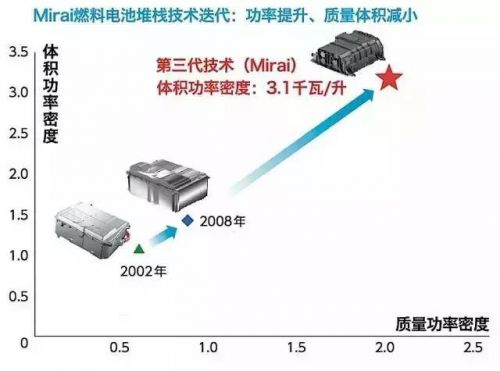
Safety is a top priority for hydrogen storage. Toyota's tanks are designed to withstand up to 70 MPa of pressure and use Kevlar-like materials to protect against potential damage. These measures ensure the safety of both the driver and the environment.
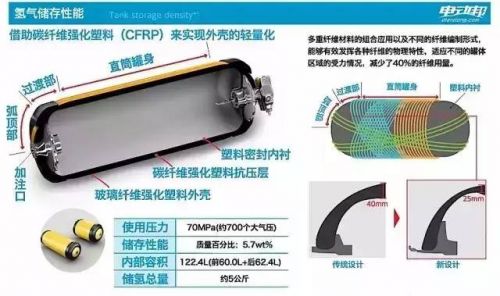
The hydrogen tank features a four-layer structure: an aluminum inner tank lined with plastic, wrapped in carbon fiber reinforced plastic, and protected by a glass fiber shock-absorbing layer. Each layer is optimized for strength and protection based on the tank's position, enhancing overall durability.
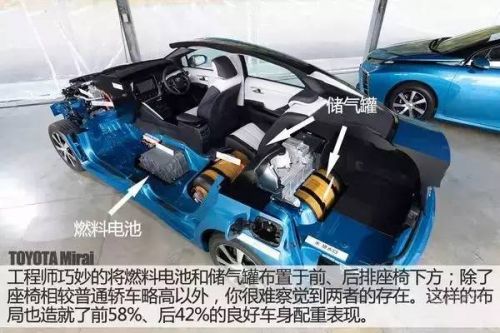
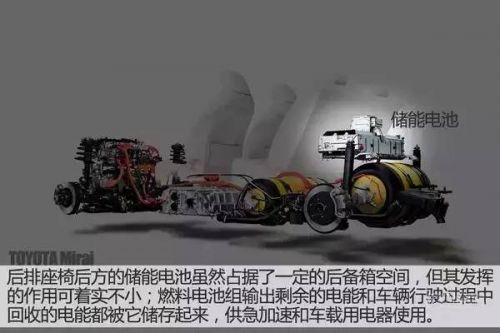
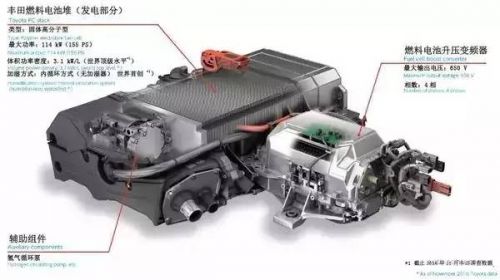
To meet the demands of the motor, the fuel cell system boosts the voltage from 250V in 2008 to 650V today, ensuring sufficient power for high-performance driving.
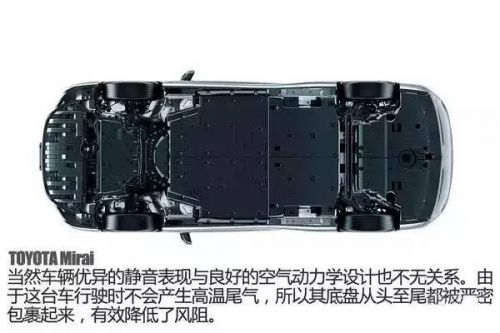
The motor, producing 113 kW and 335 N·m of torque, comes from the Lexus RX450h. It efficiently powers the Mirai’s 1.8-ton body, offering enough performance for daily use. Most drivers won’t need extreme acceleration, making it practical for everyday use.
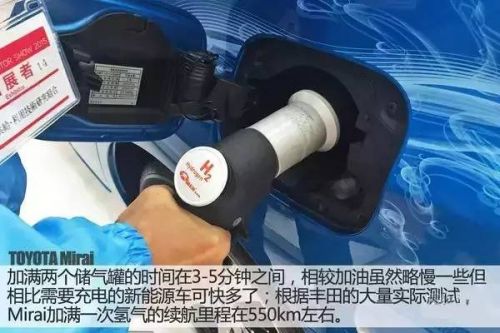
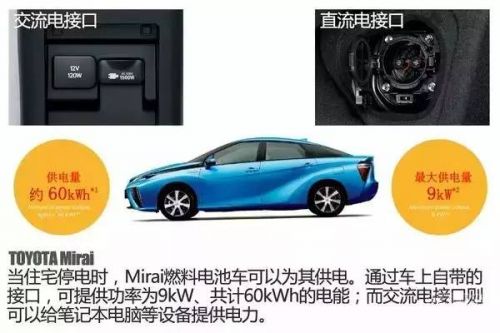
Hydrogen fuel cell vehicles offer two major advantages over electric cars: refueling time is comparable to gasoline vehicles, and their range is significantly longer than that of similarly sized battery-electric vehicles.
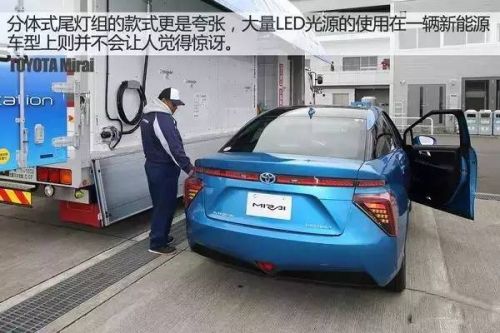
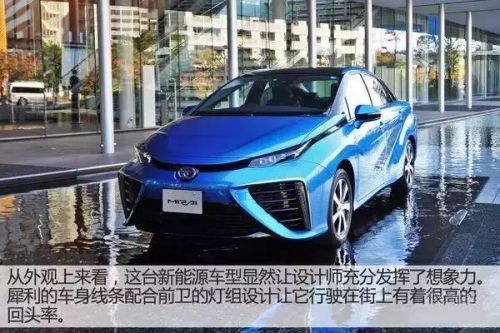
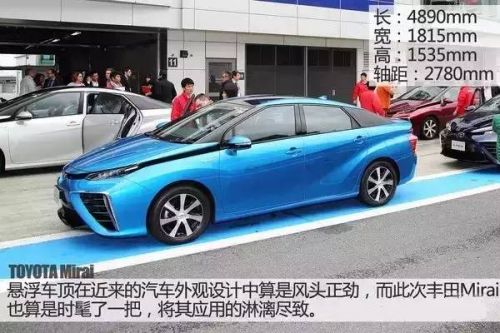
The Mirai also has a unique feature: it can act as a portable power source, providing electricity for home appliances or other devices. This makes it more than just a car—it’s a mobile energy solution.
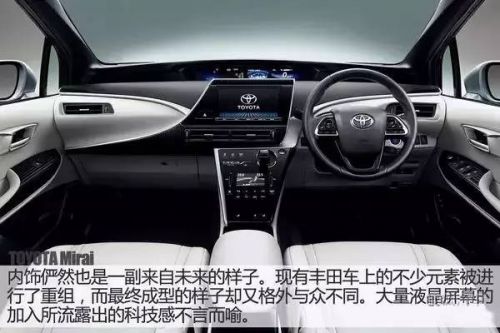
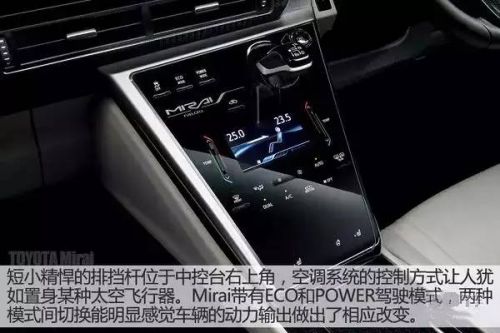
As a commercial product, the Mirai offers many appealing features beyond its advanced technology. Its design is modern and eye-catching, reflecting a bold departure from traditional car aesthetics.
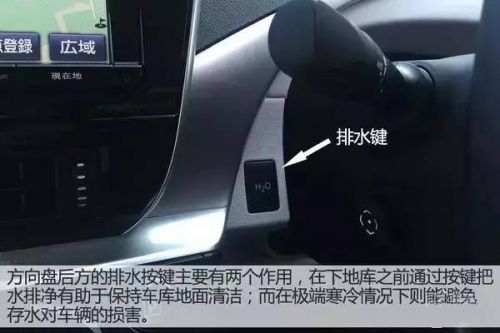
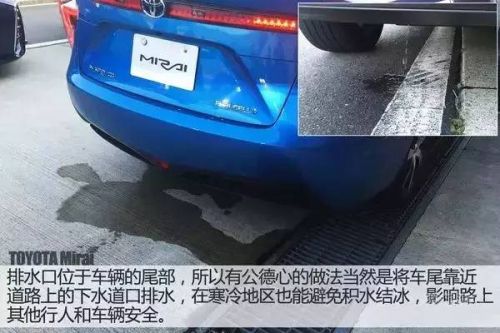
Toyota’s designers have taken a bold approach, using avant-garde elements like slim headlights and continuous taillights. From the outside, the Mirai looks futuristic and highly distinctive.
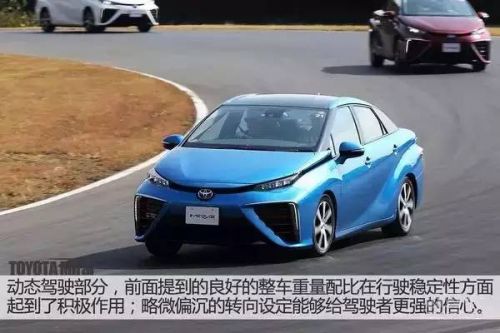
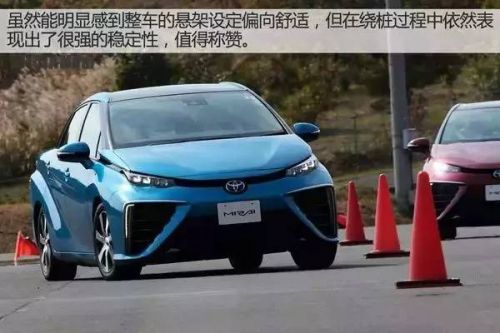
Inside, the Mirai blends familiar Toyota and Lexus elements into a fresh and modern design. Every detail reflects the uniqueness of a hydrogen fuel cell vehicle, making it stand out in the automotive world.
After the hydrogen reacts, the only emission is water, which is released through a tailpipe labeled “H2O.†While it's a clean process, there's potential for further innovation in recycling this water. For now, it's a small but important step toward sustainable transportation.
Despite its high-tech features, the Mirai feels very approachable. Driving it is similar to a regular electric vehicle, with no noticeable differences in handling or comfort. It doesn’t feel like a futuristic concept—it feels like the real deal.
Currently, the Mirai is available in Japan, priced around 380,000 yuan before taxes. Even after accounting for fees, it remains competitive with traditional mid-size cars. The cost of hydrogen fuel is also relatively low, with prices around 1,000 yen per kilogram. With more hydrogen stations in the future, the Mirai could become a viable alternative to electric vehicles.
In conclusion, the mass production of hydrogen fuel cell vehicles marks a significant step toward a cleaner, more sustainable future. While electric vehicles are popular today, hydrogen fuel cell cars address key limitations like long charging times and limited range. The Mirai isn't just a car—it's a glimpse into what the future of transportation might look like.
Sensors are complex devices that are often used to detect and respond to electrical or optical signals. Sensors convert physical parameters (such as temperature, blood pressure, humidity, speed, etc.) into signals that can be measured electrically. Proximity sensors detect the presence of objects with almost no point of contact. Due to the lack of contact between the sensor and the object under test and the lack of mechanical parts, these sensors have long service life and high reliability. The proximity sensor emits an electromagnetic or electrostatic field or electromagnetic radiation beam (such as infrared) and waits for a return signal or change in the field. The object to be sensed is called the target of the proximity sensor.
proximity sensor,pressure sensor,magnetic sensor,air pressure sensor , electronic magnetic sensor
Kunshan SVL Electric Co.,Ltd , https://www.svlelectric.com